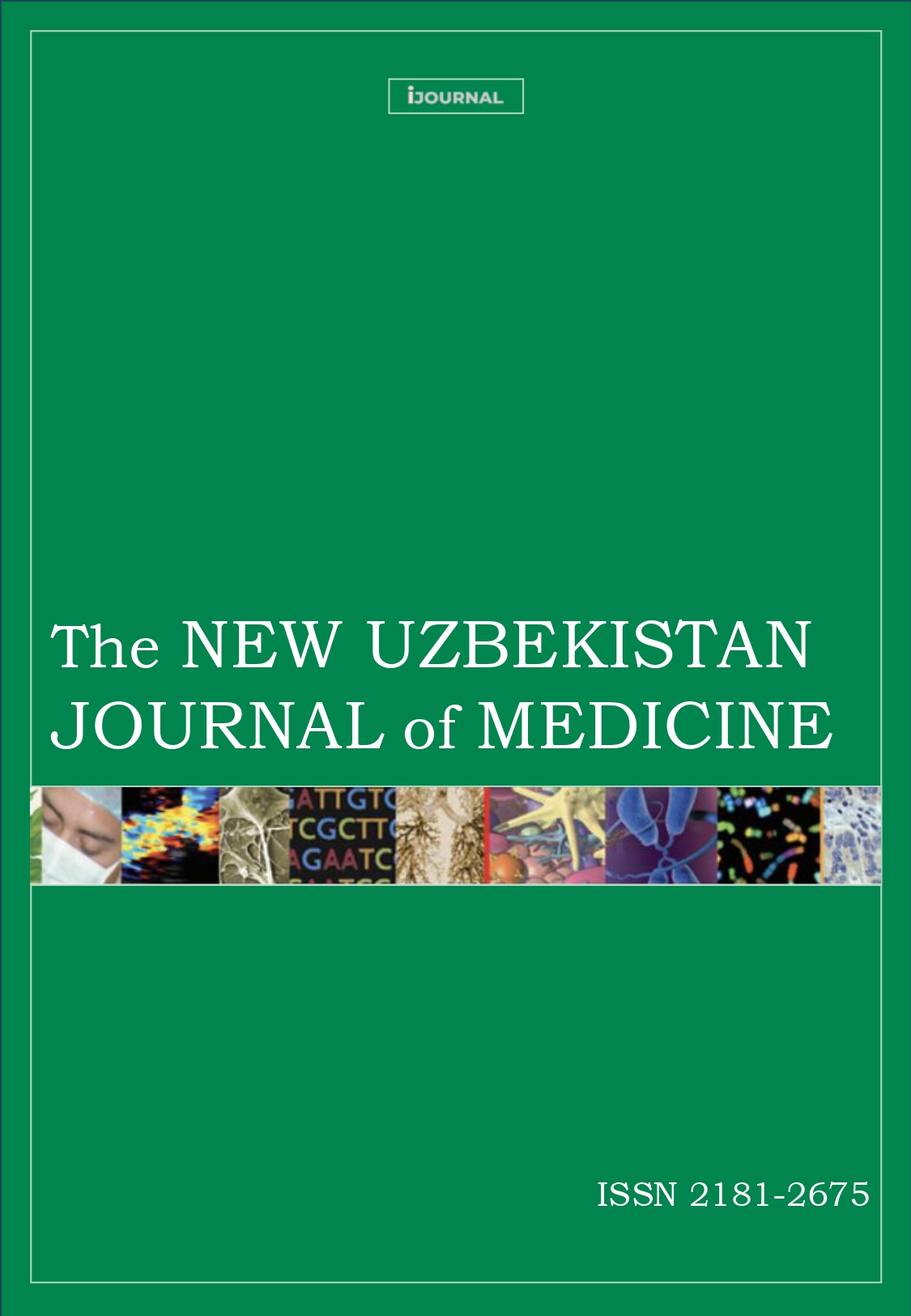THE USE OF URETEROLITHOTRIPSY IN THE TREATMENT OF CHILDREN WITH IMPACTED URETERAL STONES
Keywords:
children, ureteral stones, contact ureterolithotripsyAbstract
Ureteroscopy is the method of choice for treating children with impacted ureteral stones. In this study, ureterolithotripsy were used to assess the treatment outcomes for pediatric patients with im-pacted ureteral stones. The treatment results of 73 children aged 5 to 18 years were retrospectively evaluated. The average stone size was 10.0 ± 0.6 mm in length and 5.5 ± 0.7 mm in width. Com-plete stone removal was achieved in 71 patients (97.2%). The total number of intraoperative com-plications was 24 (33.8%). Conversion from endoscopic intervention to open surgery was required in two cases (2.8%) (Grade III). Ureteral mucosal injury was observed in 6.8% of children (Grade I), and ureteral perforation in 1.4% of cases (Grade II-a). Ureteral mucosal burns occurred in 4.1% of patients (Grade II-a) during laser lithotripsy. Deformation of the tip of the metal guidewire dur-ing an attempt to pass it retrogradely into the kidney occurred in 16.4% of cases (Grade I). Postop-erative complications were observed in 23 patients (31.5%). Elevated body temperature was noted in 8.2% of cases (Grade I), and hematuria in 9.6% (Grade I). Urinoma (Grade III-b) and stein-strasse (Grade II-a) were each observed in one child (1.4%). Systemic inflammatory response syn-drome was also reported in one case. Ureteroscopic contact lithotripsy for impacted ureteral stones in children is an effective and safe treatment method.
References
1. Adanur S., Aydin H.R., Ozkaya F., Ziypak T., Polat O. Holmium laser lithotripsy with semi-rigid ureteroscopy: a first-choice treatment for impacted ureteral stones in children? Med Sci Monit 2014; 21(20): 2373-2379. doi: 10.12659/MSM.891173
2. Bowen D.K., Tasian G.E. Pediatric stone disease. Urol Clin North Am. 2018;45:539-5350. doi: 10.1016/j.ucl.2018.06.002.
3. Bres–Niewada E. Is there a place for ESWL in the treatment of complicated proximal ureteral stones? Cent European J Urol.2013 Nov 18; 66(3): 314-315. doi: 10.5173/ceju.2013.03.art15.
4. Dogan H.S., Onal B., Satar N., Aygun C., Piskin M., Tanriverdi O., Gurocak S., et al. Factors affecting complication rates of ureteroscopic lithotripsy in children: results of multi-institutional retrospective analysis by pediatric stone disease study group of turkish pediatric urology society. The journal of urology 2011; 186: 1035-1040. doi: 10.1016/j.juro.2011.04.097.
5. El-Assmy A., El-Nahas A.R., Harraz A.M., et al. Clinically insignificant residual fragments: is it an appropriate term in children? Urology 2015; 86:593-598. http://dx.doi.org/10.1016/j.urology.2015.06.017.
6. Ghoneim I.A., El-Ghoneimy M.N., El-Naggar A.E., Hammoud K.M., El-Gammal M.Y., Morsi A.A. Extracorporeal shock wave lithotripsy in impacted upper ureteral stones: a prospective randomized comparison between stented and non-stented techniques. Urology 2010; 75(1):45-50. doi: 10.1016/j.urology.2009.06.071.
7. Morgentaler A., Bridge S.S., Dretler S.P. Management of the impacted ureter¬al calculus. J Urol 1990; 143: 2630-2666. doi: 10.1016/s0022-5347(17)39928-7.
8. Mugiya S., Nagata M., Unno T., Takayama T., Suzuki K., Fujita K. Endoscopic management of impacted ureteral stones using a small caliber ureteroscope and a laser lithotripter. J Urol 2000: 64 (2): 329-331.
9. Pettenati C., Benchikh El.F.A., Hupertan V., Dominique S., Ravery V. Double J stent reduces the efficacy of extracorporeal shock wave lithotripsy in the treatment of ureteral lumbar Stones. Cent Eur J Urol 2013; 66:309-313. doi: 10.5173/ceju.2013.03.art14.
10. Ritchey M., Patterson D.E., Kelalis P.P., Segura J.W. A case of pediatric ureteroscopic lasertripsy. J Urol 1988; 139: 1272-1274. doi: 10.1016/s0022-5347 (17) 42890-4.3
11. Tekgül S., Stein R., Bogaert G., Nijman R.J.M. Quaedackers J., Hoen L., Silay, M. S., Radmayr C., Doğan H.S. European Association of Urology and European Society for Paediatric Urology Guidelines on Paediatric Urinary Stone Disease. E uropeanurology focus. 2022; 8: 833-839. doi: 10.1016/j.euf.2021.05.006.
Published
Issue
Section
License
Copyright (c) 2025 Y.S. Nadjimitdinov, H.K. Zakirov (Author)

This work is licensed under a Creative Commons Attribution-NonCommercial-NoDerivatives 4.0 International License.
All Rights Reserved.





